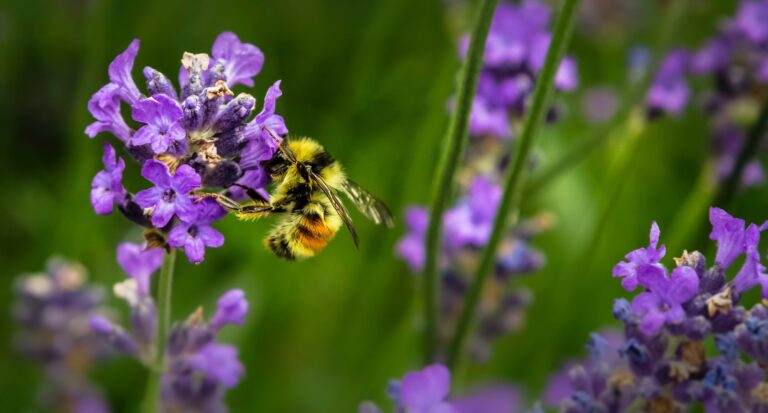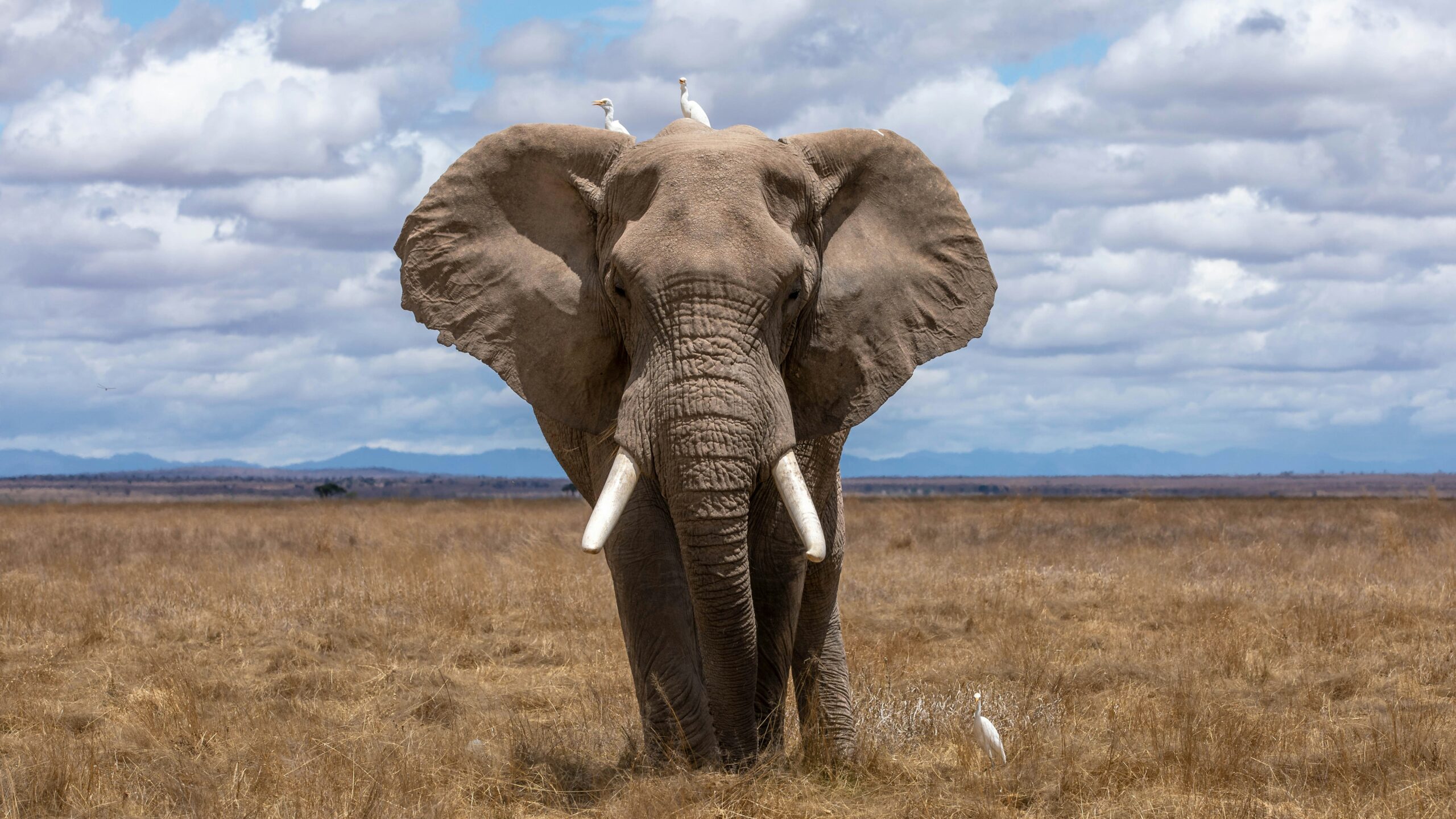
Vanishing Icons: The Species Still on the Brink
Last year, Population Matters released the Vanishing Icons: How population growth is driving our most loved animals to extinction report, examining the plight of six species. Campaigns and Media Officer Madeleine Hewitt returns to provide an update on how these species are faring in the new year.
Mountain Lions
Currently, mountain lions overall are not endangered. However, as outlined in the Vanishing Icons report, certain subspecies are vulnerable to extinction – such as California’s mountain lions.
Recently, the first comprehensive survey of mountain lions in the state was completed, shocking experts as it was found that the real figure of mountain lions is half of what was previously thought, estimated to be 3,200-4,500 cats.
Though experts agree on thing – humans pose the greatest threat to mountain lions.
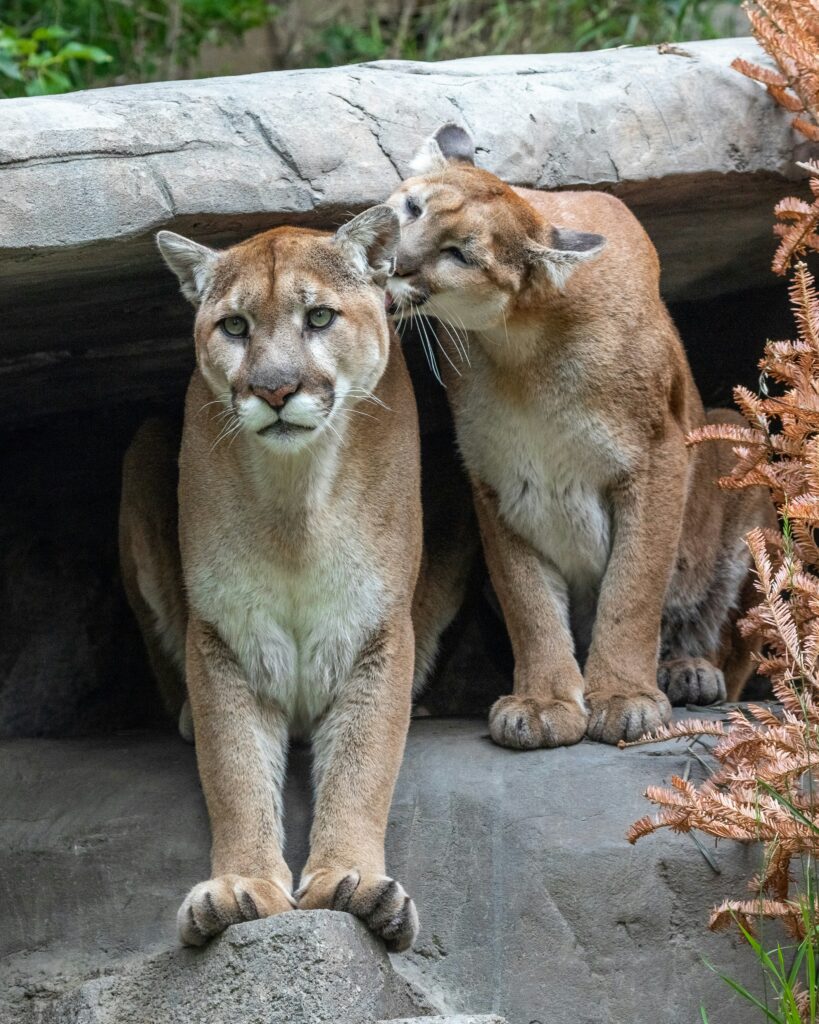
In California, 38.9 million people live within or near cougar habitat. And California’s population is set to rise, predicted to hit 40 million by 2038.
Mountain lions are vulnerable to direct threats from humans: vehicle strikes, rat poison and poaching. Urban encroachment and road building are also eroding and dividing cougar habitat, making them susceptible to dangerous levels of inbreeding. Population growth a driver of urban development and higher levels of human activity, which have a detrimental knock-on effect on local cougar populations. Scientists fear mountain lions in the golden state may be heading towards an “extinction vortex.”
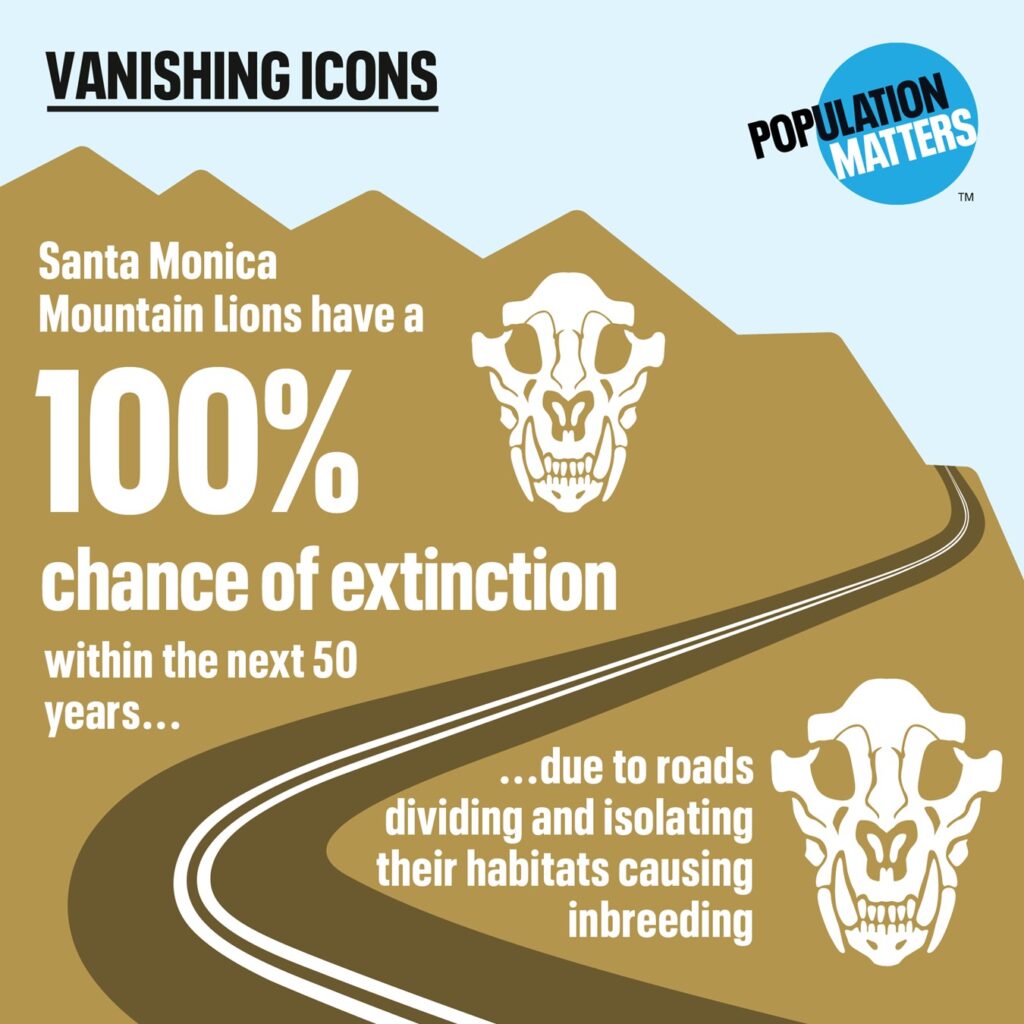
Though there may be positive news on the horizon for California’s mountain lions. Following the survey, the State Fish and Game Commission has granted cougars in six regions – from Santa Cruz to the U.S-Mexico border – an amendment to be listed as threatened.
If the amendment were to pass, then that would mean prevention from building highways in core mountain lion habitat without measures to ensure safe passage via wildlife highways. In addition, urban development could be prohibited or limited in mountain lion ranges within a region covering roughly a third of the state, which would provide much needed help to mountain lion conservation efforts.
Ultimately, the fate of California’s mountain lions rests in the hands of Californians reducing their impact upon the landscape.
elephants
African savannah elephants remain endangered, but a new study has had a breakthrough that may improve the success of elephant conservation.
The study monitored the growth rate of more than 100 groups of elephants in southern Africa. Across the area studied, researchers found huge disparities, with some regions seeing a booming population of elephants and others a sharp decline.
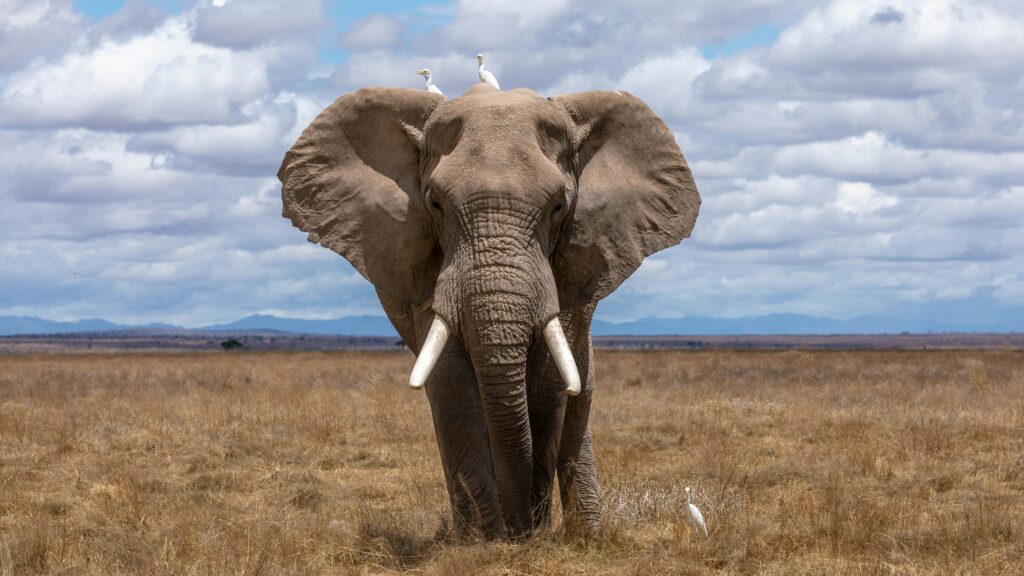
Researchers found that the regions where elephant herds are healthiest is dependent on how connected the area is to other protected areas around it – where elephants had room to roam.
The Vanishing Icons report outlines how elephants as mega herbivores depend on regular migration over large distances to search for food, water, and potential mates.
Unfortunately, available elephant ranges are becoming increasingly divided due to urban sprawl and agricultural expansion, the result of southern Africa’s rapid population growth. Southern Africa has a current population of 61 million people and is estimated to hit over 64 million by 2030 according to UN projections.
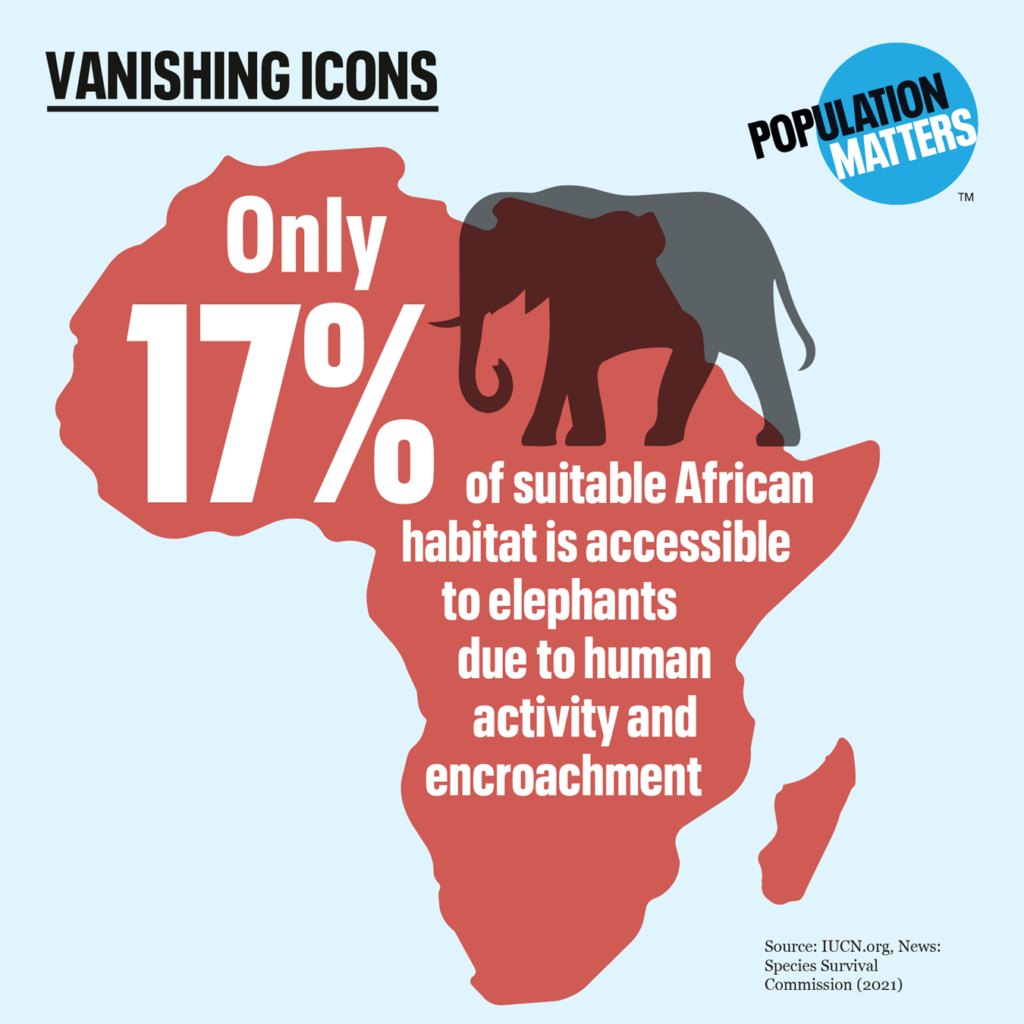
Hopefully, the insights of this new study will bolster conservation efforts to petition local governments about the importance of regulating urban and agricultural expansion to protect connected elephant ranges. To secure a future for these magnificent creatures, land untouched by human development must be left for elephants to have enough space to survive.
Tigers
Tigers remain critically endangered, and sadly have come under recent attack in India, where are an estimated 75% of the world’s wild tigers remain.

There has been a reported spike in revenge killings of tigers in one of their ranges in Tamil Nadu, India. 13 tiger deaths have been reported in the past year, a six-fold increase from the previous year. The tigers poisoned by local villagers in retaliation for tigers preying on their livestock – a vicious cycle caused by the destruction of tiger habitat due to local communities putting pressure on natural resources.
Many people living alongside tiger ranges are reliant on the forests for timber and food, this can drive deforestation and poaching, causing dwindling populations of wild pig and deer – usual tiger prey, and so hungry tigers’ prey upon the next available food source, livestock.
Conservationists have raised the alarm that’s it’s important to raise levels of education in the local community on the importance of tiger conservation.
However, sadly this issue may continue, due to the ongoing expansion of local communities into tiger ranges. India the most populated country in the world at 1.4 billion and growing.
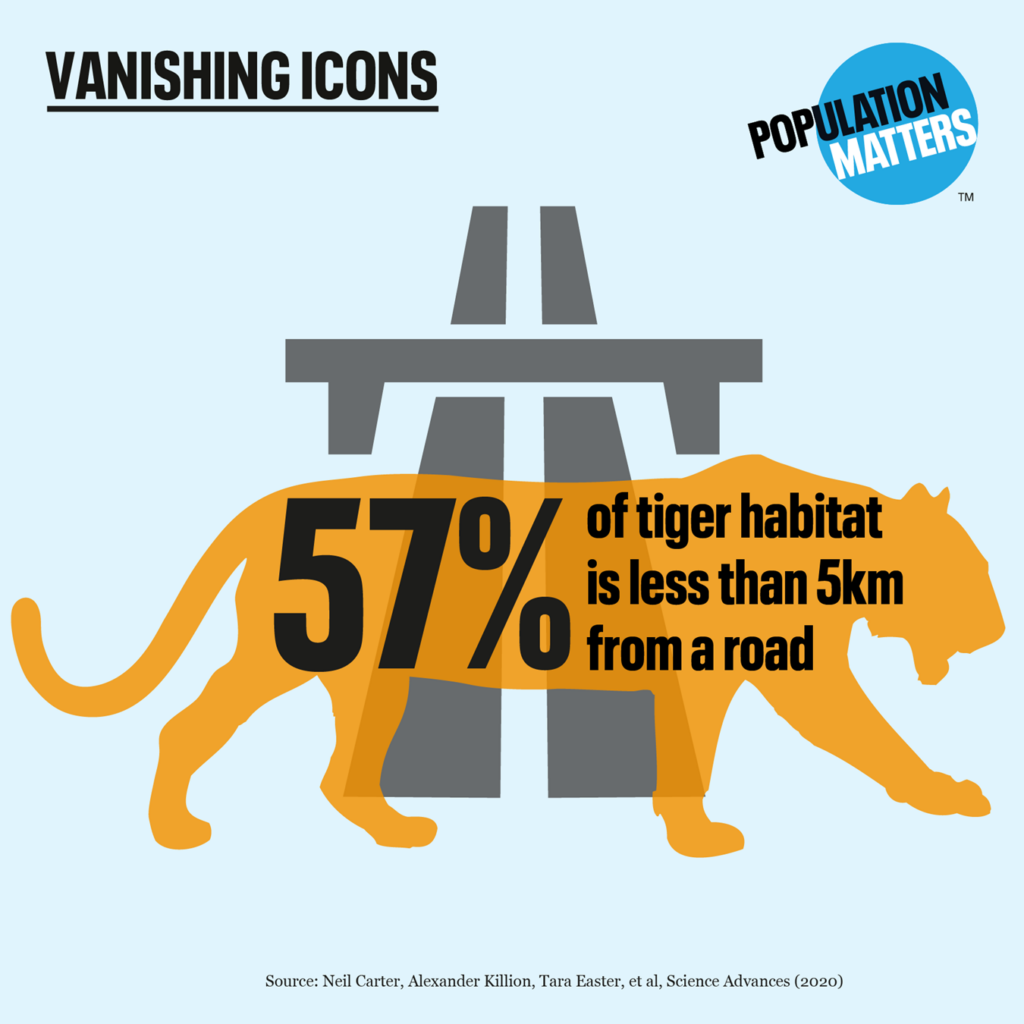
To save tigers, efforts must be made to protect tiger habitat. Population Health Environment (PHE) approaches can combine family planning with conservation efforts to reduce the pressure of local communities on natural resources. Hopefully, PHE approaches will be incorporated in future tiger conservation efforts, meaning that this vicious cycle of revenge killings may be broken.
Hedgehogs
It’s a shameful fact that hedgehogs remain classified as endangered in the UK.

Hedgehogs’ numbers in the UK have struggled over the last few decades, due to habitat loss, increased traffic, and intensifying agriculture, all of which are driven by population growth.
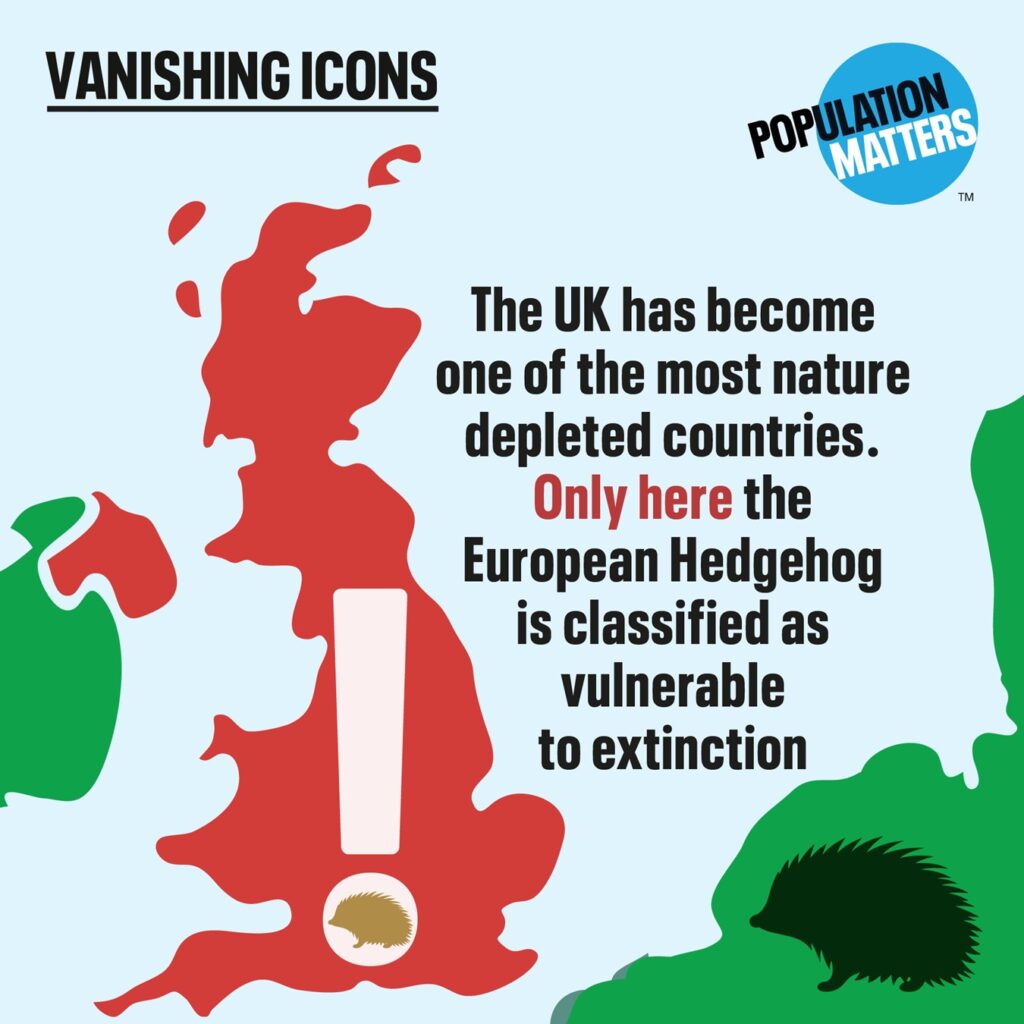
However, the plight of hedgehogs is still a cause championed by many passionate wildlife activists, including us at Population Matters.
Hedgehog Awareness Week this year has been announced to run from the 1st to 7th May, keep posted for updates on what Population Matters will be doing to participate.
Little Change
Under the sea, there has been little change for the plight of the endangered south resident orcas. Ongoing studies continue to monitor the detrimental impact of noise pollution on these orcas and other marine animals. The bad news is unless we drastically reduce our demand for shipped goods, the ocean is set to only get noisier.

Western chimpanzees remain critically endangered, with their habitats threatened by human development. Though Population Matters patron, Dr Jane Goodall remains busy championing the cause for humanity’s charming cousins.
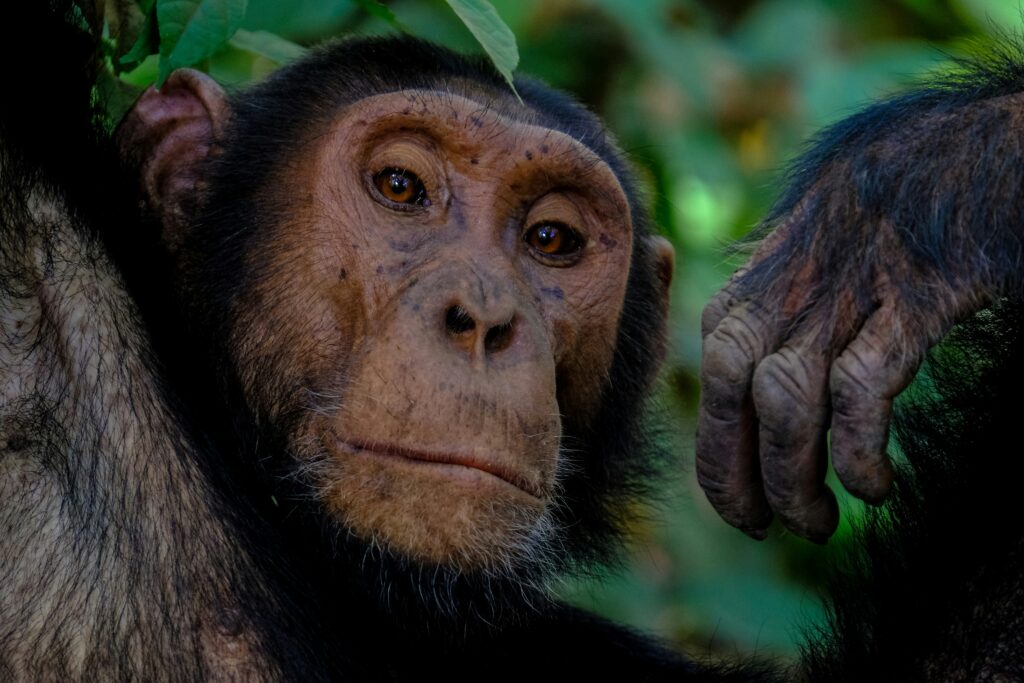
Final Thoughts
The conclusion of the Vanishing Icons report calls for the Anthropocene era to transition from one of environmental destruction to environmental stewardship. It’s hopeful that in the new year, several new studies have confirmed the need to limit the impact of human development and that conservation efforts are making strides to do so.
The message is finally getting across: to preserve the future of other species, we must reduce the impact of our own.
JOIN US
Support our campaign to promote PHE as a solution to the biodiversity crisis here.

